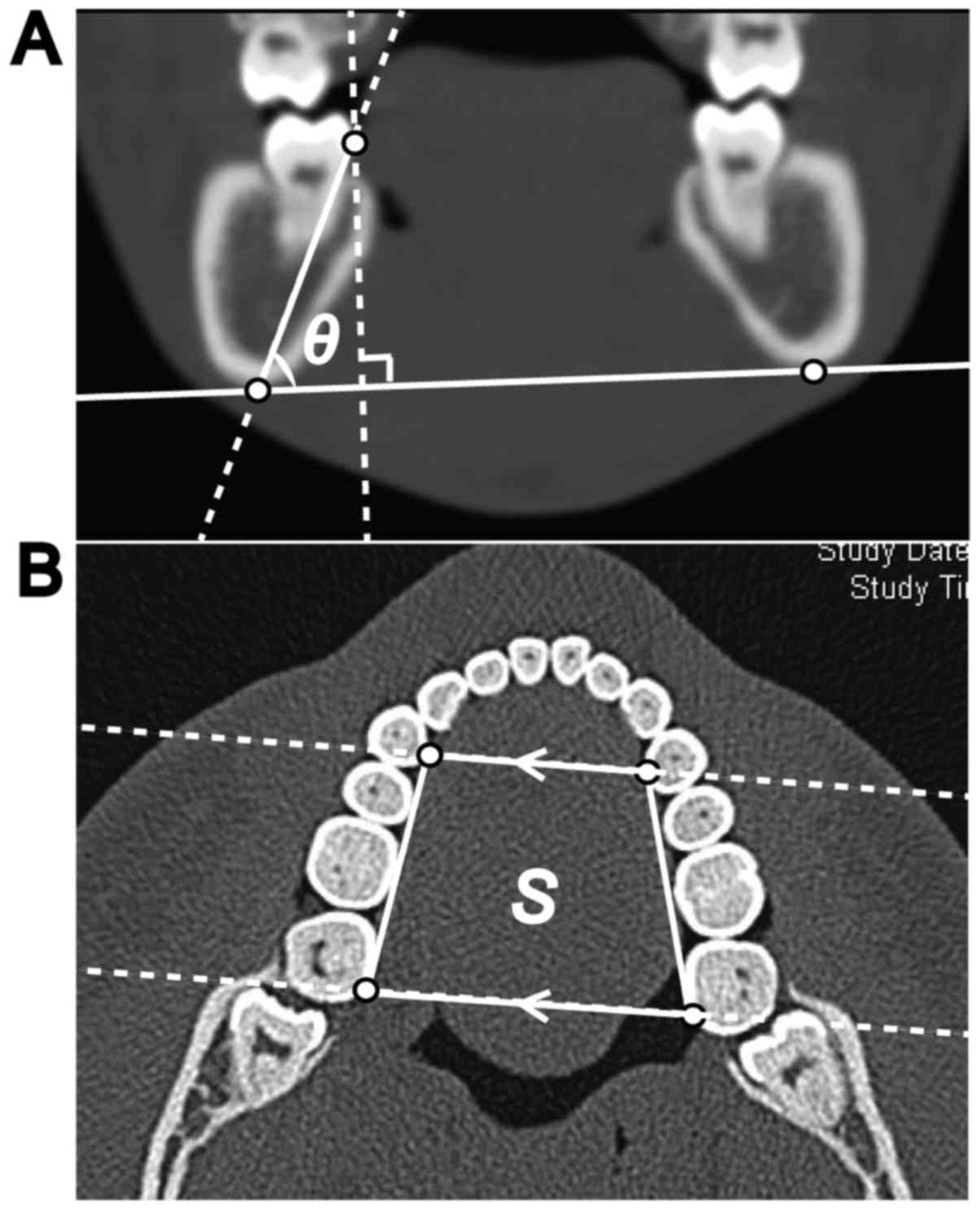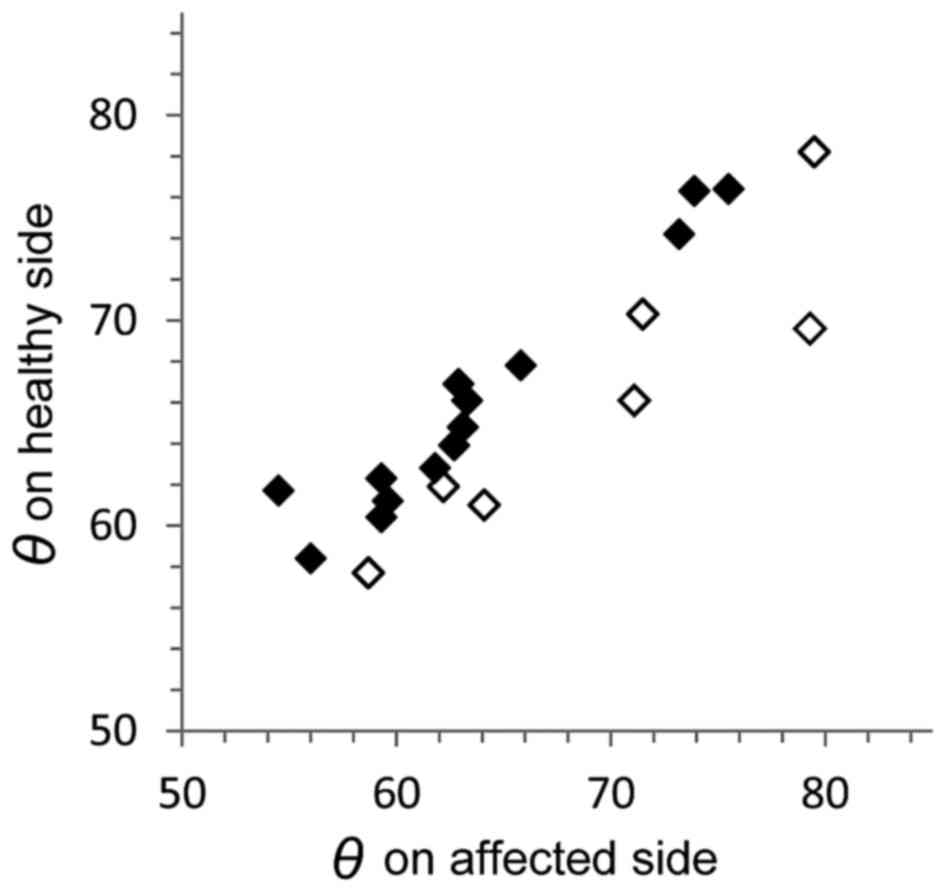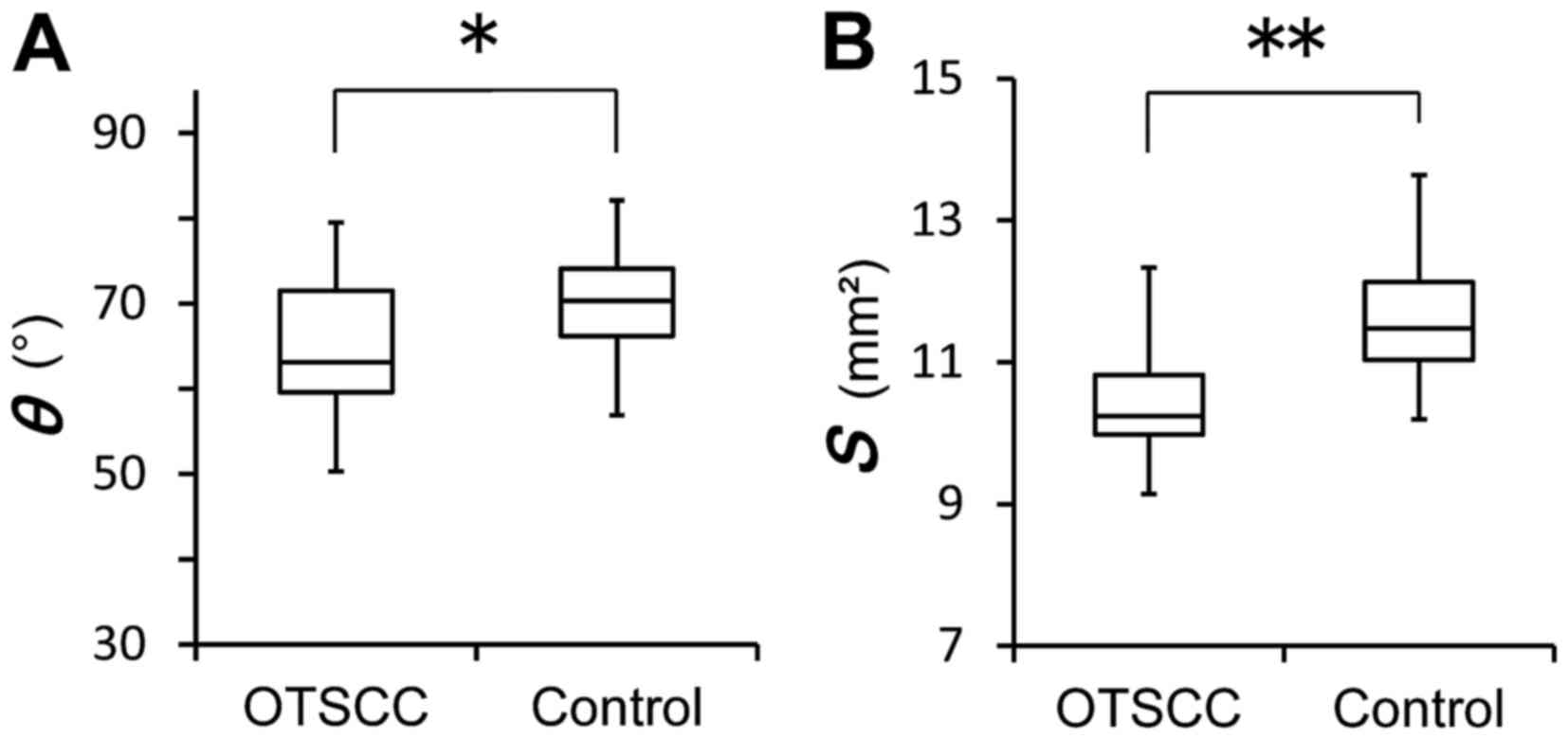|
1
|
Lissowska J, Pilarska A, Pilarski P,
Samolczyk-Wanyura D, Piekarczyk J, Bardin-Mikolłajczak A, Zatonski
W, Herrero R, Munoz N and Franceschi S: Smoking, alcohol, diet,
dentition and sexual practices in the epidemiology of oral cancer
in Poland. Eur J Cancer Prev. 12:25–33. 2003. View Article : Google Scholar : PubMed/NCBI
|
|
2
|
Fan H, Yoon KY, Kim SM, Myoung H, Lee JH
and Kim MJ: Relationship between squamous cell carcinoma of the
tongue and the position of dental prosthesis. J Adv Prosthodont.
7:129–137. 2015. View Article : Google Scholar : PubMed/NCBI
|
|
3
|
Zafereo ME, Xu L, Dahlstrom KR, Viamonte
CA, El-Naggar AK, Wei Q, Li G and Sturgis EM: Squamous cell
carcinoma of the oral cavity often overexpresses p16 but is rarely
driven by human papillomavirus. Oral Oncol. 56:47–53. 2016.
View Article : Google Scholar : PubMed/NCBI
|
|
4
|
Amagasa T, Yamashiro M and Uzawa N: Oral
premalignant lesions: From a clinical perspective. Int J Clin
Oncol. 16:5–14. 2011. View Article : Google Scholar : PubMed/NCBI
|
|
5
|
Hougeir FG, Yiannias JA, Hinni ML, Hentz
JG and el-Azhary RA: Oral metal contact allergy: A pilot study on
the cause of oral squamous cell carcinoma. Int J Dermatol.
45:265–271. 2006. View Article : Google Scholar : PubMed/NCBI
|
|
6
|
Siegelmann-Danieli N, Hanlon A, Ridge JA,
Padmore R, Fein DA and Langer CJ: Oral tongue cancer in patients
less than 45 years old: Institutional experience and comparison
with older patients. J Clin Oncol. 16:745–753. 1998. View Article : Google Scholar : PubMed/NCBI
|
|
7
|
Sato T: A study on effect of mechanical
irritation in development and progression of tongue cancer. Kokubyo
Gakkai Zasshi. 62:532–550. 1995.(In Japanese). View Article : Google Scholar : PubMed/NCBI
|
|
8
|
Hilly O, Shkedy Y, Hod R, Soudry E,
Mizrachi A, Hamzany Y, Bachar G and Shpitzer T: Carcinoma of the
oral tongue in patients younger than 30 years: Comparison with
patients older than 60 years. Oral Oncol. 49:987–990. 2013.
View Article : Google Scholar : PubMed/NCBI
|
|
9
|
Jones JB, Lampe HB and Cheung HW:
Carcinoma of the tongue in young patients. J Otolaryngol.
18:105–108. 1989.PubMed/NCBI
|
|
10
|
Garavello W, Spreafico R and Gaini RM:
Oral tongue cancer in young patients: A matched analysis. Oral
Oncol. 43:894–897. 2007. View Article : Google Scholar : PubMed/NCBI
|
|
11
|
Park JO, Sun DI, Cho KJ, Joo YH, Yoo HJ
and Kim MS: Clinical outcome of squamous cell carcinoma of the
tongue in young patients: A stage-matched comparative analysis.
Clin Exp Otorhinolaryngol. 3:161–165. 2010. View Article : Google Scholar : PubMed/NCBI
|
|
12
|
Sarkaria JN and Harari PM: Oral tongue
cancer in young adults less than 40 years of age: Rationale for
aggressive therapy. Head Neck. 16:107–111. 1994. View Article : Google Scholar : PubMed/NCBI
|
|
13
|
Soudry E, Preis M, Hod R, Hamzany Y, Hadar
T, Bahar G, Strenov Y and Shpitzer T: Squamous cell carcinoma of
the oral tongue in patients younger than 30 years:
Clinicopathologic features and outcome. Clin Otolaryngol.
35:307–312. 2010. View Article : Google Scholar : PubMed/NCBI
|
|
14
|
Manuel S, Raghavan SK, Pandey M and
Sebastian P: Survival in patients under 45 years with squamous cell
carcinoma of the oral tongue. Int J Oral Maxillofac Surg.
32:167–173. 2003. View Article : Google Scholar : PubMed/NCBI
|
|
15
|
Mallet Y, Avalos N, Le Ridant AM, Gangloff
P, Moriniere S, Rame JP, Poissonnet G, Makeieff M, Cosmidis A,
Babin E, et al: Head and neck cancer in young people: A series of
52 SCCs of the oral tongue in patients aged 35 years or less. Acta
Otolaryngol. 129:1503–1508. 2009. View Article : Google Scholar : PubMed/NCBI
|
|
16
|
Popovtzer A, Shpitzer T, Bahar G, Marshak
G, Ulanovski D and Feinmesser R: Squamous cell carcinoma of the
oral tongue in young patients. Laryngoscope. 114:915–917. 2004.
View Article : Google Scholar : PubMed/NCBI
|
|
17
|
Pindborg JJ, Reichart PA and Smith CJ:
Histological typing of cancer and precancer of the oral mucosa. 2nd
edition. Springer-Verlag; Berlin: 1997, View Article : Google Scholar
|
|
18
|
McGregor GI, Davis N and Robins RE:
Squamous cell carcinoma of the tongue and lower oral cavity in
patients under 40 years of age. Am J Surg. 146:88–92. 1983.
View Article : Google Scholar : PubMed/NCBI
|
|
19
|
Venables CW and Craft IL: Carcinoma of the
tongue in early adult life. Br J Cancer. 21:645–650. 1967.
View Article : Google Scholar : PubMed/NCBI
|
|
20
|
Newman AN, Rice DH, Ossoff RH and Sisson
GA: Carcinoma of the tongue in persons younger than 30 years of
age. Arch Otolaryngol. 109:302–304. 1983. View Article : Google Scholar : PubMed/NCBI
|
|
21
|
Mashberg A, Boffetta P, Winkelman R and
Garfinkel L: Tobacco smoking, alcohol drinking, and cancer of the
oral cavity and oropharynx among U.S. veterans. Cancer.
72:1369–1375. 1993. View Article : Google Scholar : PubMed/NCBI
|
|
22
|
Boffetta P, Mashberg A, Winkelmann R and
Garfinkel L: Carcinogenic effect of tobacco smoking and alcohol
drinking on anatomic sites of the oral cavity and oropharynx. Int J
Cancer. 52:530–533. 1992. View Article : Google Scholar : PubMed/NCBI
|
|
23
|
Schwartz SM, Daling JR, Doody DR, Wipf GC,
Carter JJ, Madeleine MM, Mao EJ, Fitzgibbons ED, Huang S, Beckmann
AM, et al: Oral cancer risk in relation to sexual history and
evidence of human papilloma virus infection. J Natl Cancer Inst.
90:1626–1636. 1998. View Article : Google Scholar : PubMed/NCBI
|
|
24
|
Laronde DM, Hislop TG, Elwood JM and Rosin
MP: Oral cancer: Just the facts. J Can Dent Assoc. 74:269–272.
2008.PubMed/NCBI
|
|
25
|
Preston-Martin S, Henderson BE and Pike
MC: Descriptive epidemiology of cancers of the upper respiratory
tract in Los Angeles. Cancer. 49:2201–2207. 1982. View Article : Google Scholar : PubMed/NCBI
|
|
26
|
Cox B, Taylor K and Treasure E: Trends in
oral cancer by subsite in New Zealand. Eur J Cancer B Oral Oncol.
31B:113–117. 1995. View Article : Google Scholar : PubMed/NCBI
|
|
27
|
Macfarlane GJ, Sharp L, Porter S and
Franceschi S: Trends in survival from cancers of the oral cavity
and pharynx in Scotland: A clue as to why the disease is becoming
more common? Br J Cancer. 73:805–808. 1996. View Article : Google Scholar : PubMed/NCBI
|
|
28
|
Jainkittivong A, Aneksuk V and Langlais
RP: Oral mucosal conditions in elderly dental patients. Oral Dis.
8:218–223. 2002. View Article : Google Scholar : PubMed/NCBI
|
|
29
|
Lockhart PB, Norris CM Jr and Pulliam C:
Dental factors in the genesis of squamous cell carcinoma of the
oral cavity. Oral Oncol. 34:133–139. 1998. View Article : Google Scholar : PubMed/NCBI
|
|
30
|
Kinnebrew M, Gettleman L, Carr RF and
Beazley R: Squamous cell carcinoma of the tongue in a young woman.
Report of a case with etiologic considerations. Oral Surg Oral Med
Oral Pathol. 58:696–698. 1984. View Article : Google Scholar : PubMed/NCBI
|












